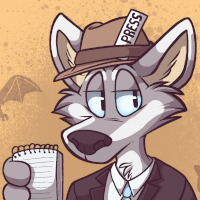Submitted by Fred Patten, Furry’s favorite historian and reviewer.
 Minions: The Deluxe Junior Novel, Adapted by Sadie Chesterfield, Based on the Motion Picture Screenplay Written by Brian Lynch. Illustrated.
Minions: The Deluxe Junior Novel, Adapted by Sadie Chesterfield, Based on the Motion Picture Screenplay Written by Brian Lynch. Illustrated.
NYC, Little, Brown Books for Young Readers, May 2015, hardcover $9.99 (131 pages), paperback $6.99.
Paddington: The Junior Novel, Adapted by Jeanne Willis, Based on the screenplay written by Paul King, Based on the Paddington Bear novels written and created by Michael Bond. Illustrated.
NYC, HarperCollinsBooks/HarperFestival, October 2014, trade paperback $5.99 (142 pages, Kindle $5.99.
Penguins of Madagascar: Movie Novelization, adapted by Tracey West. Illustrated.
NYC, Simon and Schuster/Simon Spotlight, October 2014, trade paperback $6.99 (142 pages), Kindle $6.49.
Planes: Fire & Rescue: The Junior Novelization, Adapted by Suzanne Francis. Illustrated.
NYC, Random House, June 2014, trade paperback $5.99 (122 pages).
Rio 2: The Junior Novel, Adapted by Christa Roberts. Illustrated.
NYC, HarperCollinsBooks/HarperFestival, February 2014, hardcover $14.40 (144 pages), trade PB $5.99, Kindle $5.99.
None of these juvenile novelizations would be worth reviewing alone, but they make a point for furry fandom: for about the last five years, there have been practically no anthropomorphic theatrical animated features, and a lot of animated features starring mostly real or fantasy humans like Pixar’s Brave and Inside Out, from major animation studios that have not had authorized juvenile novelizations of about 140 pages. (If it’s from Simon Spotlight, you can count on it having exactly 144 pages; a tipoff that all of its juvenile novelizations are written to a formula. But, in the case of Minions, those 144 pages include 131 pages of novel, plus 13 pages of color plates, black-&-white illustrations, and advertising.) Many VFX-heavy live-action features like Avengers: Age of Ultron and Guardians of the Galaxy and Tomorrowland have novelizations, too. I could have picked Blue Sky Studios’ Ice Age: Continental Drift or Epic; Disney’s Wreck-It Ralph or Tangled or Frozen or Big Hero 6; DreamWorks Animation’s Turbo or Mr. Peabody and Sherman or Home (despite Home being already based on a “real” book, Adam Rex’s The True Meaning of Smekday); LAIKA’s ParaNorman or The Boxtrolls; Sony Pictures Animation’s Cloudy With a Chance of Meatballs or Hotel Transylvania 2; Warner Animation Group’s The Lego Movie (144 pages from Scholastic, Inc.) – almost any animated feature. Read the rest of this entry »
 Kairos. Tome 3, by Ulysse Malassagne.
Kairos. Tome 3, by Ulysse Malassagne.






 The first edition of A Whisper of Wings was arguably the first professional furry specialty press book ever published, by Vision Novels in October 1999. Anything before that was really a fanzine calling itself a book.
The first edition of A Whisper of Wings was arguably the first professional furry specialty press book ever published, by Vision Novels in October 1999. Anything before that was really a fanzine calling itself a book. 45 pages), Kindle $2.99.
45 pages), Kindle $2.99.
